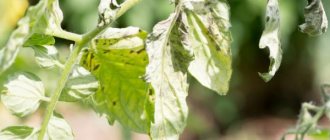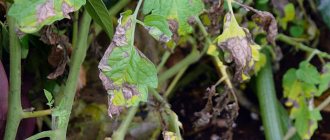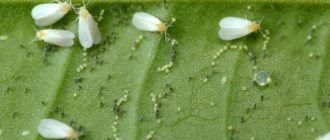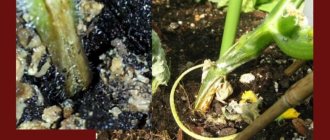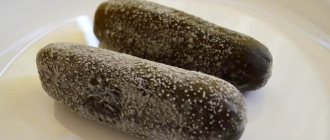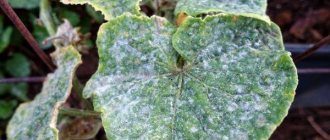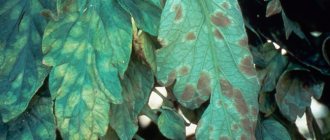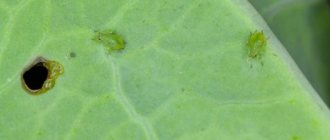Control measures in the greenhouse
In modern industry, there are a considerable number of chemical compounds for controlling moths on tomatoes. However, in some cases, gardeners should destroy the pest in the greenhouse using biological methods. What is the best way to fight the parasite? There is no clear answer to the question: it all depends on the abundance of insects and the degree of damage to plants caused by the tomato moth.
Effective measures to combat tomato moth in greenhouses and open ground
Getting rid of the pest is very difficult, since the larvae are usually found inside fruits that protect the caterpillars from exposure to chemicals, or in the ground where the pupation process occurs.
______________________________________________
Certain difficulties are caused by the rapid adaptation of this pest to various insecticides within 1-2 years. Drugs that recently helped cope with this problem very well become completely useless after a short period of time. ______________________________________________ Scientists in many countries are trying to find effective drugs to destroy the pest, but so far victory is not on the side of humans.
Photo: Fight the pest with effective means
Since nightshade vegetables are fairly early-ripening crops, I do not recommend using chemicals on your plots.
How to fight moths on tomatoes using gentle methods
These include: preventive, biological, chemical, agrotechnical.
Prevention measures should be taken
- Grow resistant varieties.
- Regular plant inspections should be carried out. Timely detection of the pest will allow for earlier destruction.
- Eggs, pupae and larvae of the pest can be introduced with purchased soil for indoor plants or seedlings. Be careful. Before use, carefully sift the soil through a fine sieve or heat-treat it.
- Hanging glue traps and glue belts will help catch some of the migrating butterflies.
- Try to destroy any damaged plants or their parts that are found.
- Larvae and pupae are well preserved even in winter on work clothes, containers, and work tools, which are put away in warm rooms for the winter.
- Be sure to remove plant remains and tops at the end of the season. These are convenient places for the pest to overwinter.
- Owners of greenhouses should carry out regular disinfection after harvesting, especially secluded corners in areas of ceilings and joints of frame parts.
Photo: Damaged leaves must be removed
Biological methods of pest control
- Use of insect predators: Trichogramma flies, Trichogramma parasite, Macrolophus Thais, Nesidiocoristenuis, tree bugs and others in places where the pest is concentrated. They are purchased in specialty stores or enterprises. ________________________________________ However, this method is preferable and most effective in greenhouse conditions. ________________________________________
- Attracting birds to pest-infested plantings. Starlings, sparrows, and tits are considered the best moth fighters.
- Traps treated with pheromones are installed on tomato plantations. Particularly effective of them are “Qlure-TUALD” and “TUA-Optima”.
Chemical preparations (insecticides) for tomato moth
- Recently, the greatest effect in getting rid of this pest (up to 100% of the larvae are destroyed) is achieved with the use of abamectin and chlorfenapyr.
- When there is an extreme level of colonization of plantings by the miner, the plants and the area around are treated with chemicals: Actellik, Fufanon, Aktara, Koragen, Avant, Prokleym.
- The best solution would be to use harmless biological products: Boverin grain-BL, Baciturin.
- Popular preparations made from plant materials: Trichilia pallens and Azadirachtaindica.
Insecticidal treatments are recommended during the period of mass egg laying and the birth of larvae (every ten to fifteen days).
Photo: Moth affects tomatoes both in the greenhouse and in the open ground
Agrotechnical measures
- Regularly destroy weeds around plants.
- After harvesting, it is necessary to carry out thorough mechanical tillage of the soil, deep plowing or cultivation in order to destroy the pupae as much as possible.
- Remove diseased plants and plant tops after harvesting.
- Feed the plants with mineral fertilizers in a timely manner, creating favorable conditions for plant development.
Folk remedies
- The leaves are treated with rapeseed or mustard oil on the bottom and top sides.
- This moth cannot tolerate the smell of citrus fruits. Hence the way to fight it is to spread orange peels or use store-bought essential or home-prepared citrus oil.
- A lavender bush is planted, dried flowers are hung, or its oil is sprayed. This aroma is also not welcomed by leafminer moths.
- Mint plants planted in free areas nearby will also help. Dried mint bunches are also effective.
| It is not advisable to use insecticides in the greenhouse. Apply biological, preventive, agrotechnical methods. Folk remedies that do not harm summer residents and pets are also popular. |
However, it has been experimentally established that only the integrated use of several methods will help in the fight against this pest. It is unlikely that you will be able to limit yourself to just one method. In the Khabarovsk Territory, fortunately, this pest practically does not appear. At least, this information did not reach me.
Photo: Keep an eye on nightshades to detect the pest in time and take action _____________________________________________
By
Kinds
There is one type of pest - the South American tomato moth. Representatives of this group are called Tuta absoluta, belong to the Lepidoptera family and originally destroyed the tomatoes of South America. In the 21st century, the insect settled in Southern Europe and reached Russia.
Damage to plants is caused by larvae; adult butterflies are not dangerous to the crop. The parasite bores leaves and fruits. As a result of the active activity of the insect, irregularly shaped “mines” are formed on plant leaves. It is for this reason that the pest is otherwise called the tomato leaf miner. The damaged leaf begins to resemble translucent gauze.
The larva is able to feed on plants throughout the entire period of tomato growth.
Features and appearance
Tuta absoluta (Latin name) is an insect that has a full transformation cycle and a high reproduction rate. The butterfly is small in size, its wingspan reaches 10-12 millimeters. The proboscis is short and tube-shaped. The antennae are black.
The head is gray in color, darkening closer to the neck. On the front wings there are scales with a white base, reddish-brown and white speckles, characteristic black spots, which are framed by a brown or yellow tint. On the underside of the belly there is a creamy surface of the body. Back porches are characterized by a dark gray color that becomes lighter towards the base.
Adults are most active at dusk and dawn; during the day, butterflies hide in the middle of the leaves of vegetation. According to research results, the maximum number of males were caught by pheromone traps in the period from 7:00 to 11:00.
Life cycle
The development cycle of the tomato moth under optimal conditions lasts for 40 days, which includes 4 stages:
- Egg (oval in shape, cream or yellowish in color).
- Larva. During development, it changes color from yellow to reddish. The caterpillar length is about 7 mm.
- Pupa (brown in color, size 5 mm).
- Adult.
The female can lay up to 3 hundred eggs, placing them on the inner surface of the leaf or on top of the stem. During the daytime, the parasite hides; at night, fertilization and laying take place. In the form of an egg, the insect exists for 7 days.
The life cycle of larval development lasts 15 days. During this period, the caterpillar manages to infect the leaves, stems, flowers, and fruits of the plant. The pupal stage takes 10 days. At this time, the formation of a cocoon occurs. Then an adult appears, which lives only 7 days, however, it actively reproduces.
During a female-dominated season, up to 12 generations of offspring can be reproduced. Under favorable conditions, this most dangerous quarantine pest can destroy more than one tomato plantation.
Description of tomato leaf miner
The tomato leaf miner is a pest of many agricultural crops, characterized by a high reproduction rate, rapid adaptation to environmental conditions, and unpretentiousness. The moth got its name because it prefers tomatoes to all other plants. And they called it mining because the larvae seem to mine the plant, eating them out from the inside and leaving many passages in the tissues.
Appearance and lifestyle
The tomato moth belongs to the family of moths. The adult is a moth 5–7 mm in size, with a wingspan of about 10 mm. The color is gray-brown, with dark spots on the wings. On the head are large black eyes and long antennae. Adult insects are active mainly at night and early in the morning.
Appearance
Midges lay eggs on the leaves or stems of tomatoes. The emerging caterpillars are small worms of a dirty white color, which subsequently changes to light green, and just before pupation to pinkish.
Spreading
By origin, the tomato moth is a South American insect. As trade relations between countries developed, the pest began to actively spread throughout the world. Today, this species of moth can be found in Europe, Africa, and India. In Russia, the pest began to be detected starting in 2010.
Reproduction and development cycle
The only task of an adult insect is to ensure procreation. The female lays up to 300 eggs throughout her life. 10 - 15 generations appear per year. The life cycle of an insect consists of 4 stages:
- egg - after 4 - 6 days a larva appears from it;
- larva – develops from 11 to 35 days depending on the ambient temperature;
- pupa - the process of metamorphosis in the cocoon takes from 9 to 11 (in rare cases up to 20) days;
- adult.
The lifespan of an adult moth is 9–23 days; the entire development cycle can last from 30 to 85 days.
How to get rid of tomatoes
The first thing an owner can use in his garden plot is pheromone traps. A pheromone-based trap helps not only to catch parasites, but also to conduct further monitoring. The technique does not kill pests, but only helps to collect them in one place for further destruction.
If we are talking about mass captivity of insects, a modern trap - Qlure-TUA - will help. It is better to give preference to this method of control when the soil is protected. It is not advisable to use the product if the soil is unprotected. The trap will reduce the population of attacking insects. To do this, you just need to place “baits” in strategic areas.
The most effective method is in combination with other methods aimed at combating moths on tomatoes. Pheromone traps are not always available. In this case, an alternative method will come to the rescue - the use of living organisms.
The leaf miner on tomatoes can “boast” of a large number of enemies in nature. Among these representatives are: Macrolophus tais, Trichogramma pretiosum, etc.
These same organisms can easily be used in the garden or greenhouse if the question arises of how to get rid of heart moths on green tomatoes. Trichogramma are the most effective in this regard - they reduce up to 92% of all pests.
Tomato moths and whiteflies on tomatoes are best destroyed with Bacillus thuringiensis. This option will be justified in case of mass accumulation of parasites - when the problem is considered at the state level.
Development and reproduction
Depending on the comfort of weather conditions, pests can produce no more than 12 generations annually. For example, in the case of laboratory conditions, where the air temperature was 25 degrees and the relative humidity level was 75 percent, the pest development cycle was 29 days. If we take into account field conditions, the tomato moth could produce about 6-8 generations per year.
Since pests have the ability to develop in closed ground, the number of generations can be significantly higher than what was indicated in the results of the field study. It is worth noting that parasites are able to overwinter in the stages of egg, pupa, and imago (adult).
The average life span of an adult parasite is 19-42 days (males) and 18-38 days (females). Adults can mate several times during their lives, and the process can begin the very next day after the pupa turns into an adult.
One clutch can contain 60-120 eggs. The eggs are small, cylindrical in shape, creamy yellow in color and about 0.35 millimeters in size. Females lay eggs throughout the day, but the peak is at night.
The caterpillar hatches from the egg in the morning and immediately begins to penetrate the vegetation tissue, thereby feeding and creating damage. The caterpillars are characterized by a green body and black head, but as they grow, the head turns reddish.
The dorsal side of the first thoracic region has a clear spot in the form of a semicircle - this distinguishes the tomato moth from the potato moth. Adult caterpillars reach a length of 9 millimeters, and pupae - 6 millimeters.
According to laboratory studies, the larvae hatch between 6:00 and 9:00 hours (approximately 96 percent).
Caterpillars damage such parts of young plants as leaves, stems, shoots, flowers, and if we talk about damage to fruits, this can be observed during each stage of ripening. Caterpillar mines increase in size depending on the insect's growth.
In some cases, there is a risk of the tomato leaves being completely eaten (only the veins remain). Before the pupation process occurs, the caterpillars weave silk cocoons, making them in the form of a rolled leaf. They do not enter diapause until food resources are available.
The minimum temperature at which the tomato moth can develop is 8.1 degrees Celsius; for eggs this figure is lower - 6.9 degrees, caterpillars - 7.6 degrees, pupae - 9.2 degrees.
Chemical control methods
Chemical methods of controlling tomato moth are more popular. However, the fight against tomato moths in this case must be carried out very carefully. At the first stage, gentle techniques are used. If they do not give the desired result, you can move on to the “heavy artillery” - spraying tomatoes with preparations based on pyrethrum. You can also use an aqueous solution of the drug.
The spraying procedure for poisoning tomato moths or whiteflies on tomatoes is carried out no more than 6 times with intervals of several days. It is recommended to follow the prepared schedule.
Attention! Frequent use of insecticidal preparations leads to the development of resistance to the composition by insects.
Among the long-acting active substances that are effective in the fight against insect larvae are: Deltamethrin, Imidacloprid, etc. The named insecticides against tomato moth can be used exclusively for treating leaves; fruits that absorb the substances through the formed “mines” will harm the human body.
Chemical treatment against tomato moths can harm not only the parasites, but also the gardener.
To avoid unpleasant consequences, the following safety precautions should be followed::
- use gloves and a mask to protect exposed skin;
- Carry out the procedure in the morning or evening with minimal insect activity;
- carry out processing no more than 6 times, taking breaks of several days.
However, the question of how to get rid of moths is not closed. The fact is that the larvae of parasites are tenacious and after getting into the soil (when etched) they can continue to develop . In this case, we are talking about a severe infection - aqueous solutions of preparations based on pyrethrum will come to the rescue, which the gardener will have to pour onto the beds.
The scheme for using drugs in the process of getting rid of moths involves using the drug using one of the following methods:
- spraying plant leaves;
- adding the solution to the soil;
- injection into the trunk.
The first method is the safest and most accessible. Chemicals should only be introduced into the soil as a last resort, as they may be absorbed into the tomatoes. The same applies to injections into the trunk.
Prevention of occurrence
The best method for eliminating tomato moths is countermeasures that prevent its appearance. This means that you should beware in advance of the appearance of such a dangerous enemy and create the least comfortable conditions for his stay.
- A detailed inspection of seedlings helps prevent the emergence of adults that are capable of bearing offspring.
- The slightest signs of oviposition are a reason for a methodical inspection of the leaves, which should be carried out immediately.
- Experts recommend removing damaged plants and collecting fallen leaves from tomato bushes. Then they are burned along with the larvae.
- It is recommended to carry out a preventive inspection procedure at the beginning of each season.
- Attention should be paid to both damaged tomato bushes and surrounding plants.
Note: one of the most effective drugs for combating tomato moths is halo oil; the product allows you to destroy 100% of pests.
Folk remedies in the fight against the parasite
In addition to the main method of pest control, you can use several folk recipes:
- Mustard oil. Plant leaves should be treated with the composition on both sides.
- Rapeseed oil. Use a similar method.
- Orange (fresh or essential oil). The insect does not like the aroma of citrus fruits. You can scatter orange peels on the beds or spray oil.
- Lavender. It is recommended to plant a lavender bush in a pest-free greenhouse or simply hang bunches of flowers from the plants.
- Mint. You can start arranging beds with mint inside the greenhouse or simply hang dried grass.
Signs of infection
You can understand that a plant has been attacked by a tomato leaf miner by the following signs:
- leaves turn yellow, become deformed, curl;
- fruit ripening occurs unevenly;
- the tomato pulp becomes discolored;
- Many small holes appear on the leaves.
The surest evidence is the presence of insects. If you touch the bush, a cloud of midges will flutter from it, and caterpillars can be found on the underside of the leaves.
Tomato moth or whitefly?
Inexperienced gardeners, noticing damage to the bushes, begin to look for remedies for tomato moths. However, in many cases the pest found on tomatoes is whitefly, small white midges.
Attention! Insects can be distinguished not only by color, but also by size (the whitefly is much smaller - 1...3 mm).
Tomato moth larvae gnaw passages inside the plant tissue, and whiteflies suck the juice out of it. In addition, a plant affected by whitefly is characterized by a sticky whitish coating on the leaves.
What harm can the tomato leaf miner cause?
Tomato moth poses a threat to plants such as:
- tomatoes;
- Bell pepper;
- eggplant;
- beans;
- potato.
Damaged vegetable
Moth larvae are active during the entire growing season of tomatoes and other crops, from seedlings to adult plants with ripening fruits. The larvae gnaw through all parts of the plant - stems, leaves, fruits. Affected bushes wither, dry out, and develop a bacterial or fungal infection. As a result, the crop dies.
Preventing tomato moths
Of course, if it is possible to understand the current situation in advance, then it is better to take certain steps .
- Careful control of landing. Provides destruction of the parasite and prevents the emergence of adult flying insects.
- Inspection of foliage. Helps detect tiny traces of oviposition.
- Affected leaves and fallen leaves are burned.
- Preventative examination annually.
- Pay attention to affected tomatoes and the plantings around them.
Experienced gardeners recommend using the old, proven method of getting rid of parasites. As soon as you see that the parasites have flown out and left your tomatoes, immediately cover the affected areas with material (preferably non-woven). This technique is effective for tomatoes, potatoes and melons.
As for greenhouses, other methods are also used that help prevent new larvae from moths.
- Treatment of the greenhouse before planting.
- Newly purchased seedlings are kept in quarantine for no more than one and a half weeks.
- It is worth introducing insects into the greenhouse that feed exclusively on larvae and help to cope naturally with parasites.
- For prevention, it is best to spray the planted plants with an infusion of chamomile.
In order to avoid the appearance of tomato, chestnut and even house moths, you should adhere to the basic rules. But if you notice such insects, you shouldn’t expect a “miracle”. It is best to use all possible methods to get rid of parasites , mine them and save the harvest. Moreover, there are many ways to get rid of moths!
